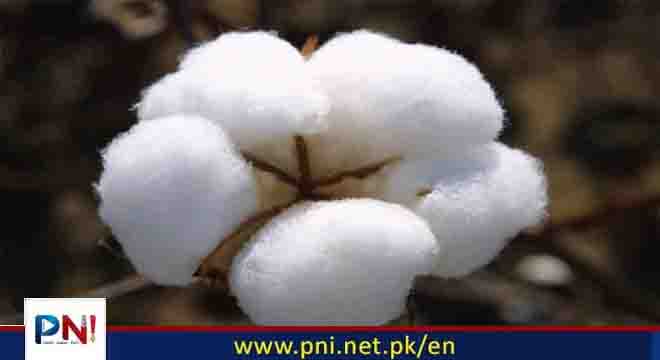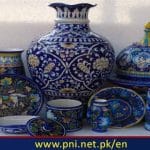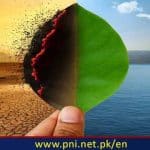MULTAN, Aug 18 :The breathable cotton fabric makes suitable attire given the hot weather conditions which at times turn extreme and is still the choice fabric for many whether at home in casual mood or out to enjoy a party. However, the fluffy cotton flowers that used to dominate the South Punjab landscape are not that much dominating these days. And textile sector does not like the story to go this way.
Khawaja Muhammad Usman, an Industrialist associated with textile and former president of Multan Chamber of Commerce and Industry (MCCI) said that Pakistan agriculture does not grow as much cotton as the textile millers’ need, to spin, weave and stitch enough yarn, fabric and garments that can turn cotton chain into a smart forex earning machine. The operations chain of cotton economy employs a larger work force from field to ginning factories and onward to textile mills and garment factories.
Pakistan’s total work force, according to Pakistan Bureau of Statistics (PBS) survey 2020-21, was 71.76 million out of which 67.25 million were employed. Over 37.4 per cent were associated with agriculture, and 37.2 per cent in services sector. Some 25.4 per cent human resources earn working for industry, a significant portion of which is associated with textiles.
They earn livelihood for families by developing products ranging from yarn, towels, bed sheets, fabric, garments, sports garments that fetch dollars from lucrative foreign markets and this national scale effort contributes 60 per cent in the total yearly export earnings for Pakistan.
Recently, Vice President, Pakistan Central Cotton Committee (PCCC), Dr. Yusuf Zafar raised concerns over the statistics of ongoing cotton season and forecast the production would likely be around 6-7 million bales, far below what the textile sector and the overall national economy expected.
He attributed the decline to a smaller cultivation area, prolonged heatwaves, unexpected rains, and severe whitefly infestations. It would be far below the textile industry’s demand of 16 million bales and the shortfall will necessitate the import of approximately 5-6 million bales, the PCCC top scientist said.
The PCCC media focal person and head of CCRI technology transfer wing Sajid Mahmood recalls that cotton production decline started after 2016 due to lack of funding on research. He said that the country’s ace cotton research body PCCC had faced financial crisis owing to non-payment.
He said, Pakistan achieved over 14 million bales production once and later it remained oscillating between 11-13 million bales. However, after 2016, the production started declining and had touched new low in 2022 with 4.5 million bales when floods had swept away crop lands in South Punjab.
South Punjab Secretary Agriculture Saqib Ali Ateel described climate change as a big trouble confronting cotton and everybody was worried about the unpredictability of weather patterns. Farmers got good results from early farming last year but early sown crop was confronted by heatwave this season. He admitted that cotton area was less this year by around 22 per cent, however, adding that despite troubles, the crop was overall good with better fruiting and flowering. Statistics show that average cotton production remained 8.8 million bales in a decade from 2008 to 2018 but only 5.1 million bales from 2019 to 2022.
Khawaja Usman said that several textile units are closed owing to higher power tariff that left them uncompetitive compared to international rivals. However, if we consider a scenario where all textile units are functioning to full potential, then they would need total 17 to 18 million bales for processing. This also includes three million bales of long fiber lint textile sector must import every year to add quality. This means they would need at least 12-14 million bales of domestic cotton per annum when all units are functioning.
However, in the current scenario when around 30 per cent of textile units are closed, this requirement would be down to 8-9 million bales, said Hussain, another forward looking entrepreneur textile miller who also runs a software house in Multan.
Exports of textile manufacturers witnessed a remarkable increase of 25.5%, US$ 19.33 billion in FY 2021-22 in comparison to US$ 15.40 billion in previous year.
According to figures from Trade Development Authority of Pakistan (TDAP), country’s total export earnings in 2022-23 stood at US$ 27700 million of which textiles contributed US$ 16501 million. Textile sector earnings from EU countries in 2022-23 stood at US$ 6528 million (39 %), USA US$4405 million (26%), UK US$1563 million (9%), China US$586 million (4%), and others US$3419 million (22%).
It may be noted that exports of home textiles, bed wear, towels, knitwear, and ready-made garments increased in value and quantity in 2022 due to high demand in post-Covid scenario. Knitwear exports grew by 34.2% in value despite a decline of 6.1% in quantity. Garments export increased by 49.2 % in quantity and 28.8 % in value. Cotton yarn and cloth also witnessed surge in exports.
Textiles and Apparel Policy, 2020-25 is aimed at fully utilizing potential of home-grown cotton augmented by manmade fibers/filaments to boost value-added exports and become one of the major players in global textiles and apparel supply chain.
According to the provisional figures compiled by the Pakistan Bureau of Statistics, overall exports from Pakistan in January, 2024 amounted to $ 2,792 million (provisional) as compared to $ 2,822 million in December, 2023 showing a decrease of 1.06% but increased by 24.81% as compared to $ 2,237 million in January, 2023.
The PCCC Vice President Dr. Yusuf Zafar highlighted the need for protecting farmers’ interests by reducing their cost of production and ensuring higher returns to farmers. He also sought higher funding for research and development and tougher measures to eliminate the role of middle men and cotton price manipulation.
Meanwhile, two important developments have taken place at federal and provincial level. A Variety Evaluation Committee (VEC) has been set up by federal government with PCCC VP as its chairman. This committee met recently in Multan and discussed 22 new cotton varieties evaluating them on tough standards put in place before their submission to Punjab Seed Council for final approval for general cultivation.
Chief Minister Maryam Nawaz has formed an Agriculture Price Commission (APC) tasked with formulating a policy on two key points, making agriculture profitable for farmers by making it a sustainable earning activity.
Secretary agriculture Saqib Ali Ateel said that scientists at were now working on CRISPR/Cas9 system involving gene editing in cotton to keep productive traits intact and deletion of aspects that affect production and quality negatively. This technology could be a ray of hope in developing climate resilient varieties of cotton, he added.
Despite the troubles, Khawaja Muhammad Hussain was upbeat on cotton survival and textile prospects. “We still hope for the best for cotton and textiles if corrective measures are taken timely.” Saqib Ali Ateel described cotton as a thread of hope that can weave a better future for Pakistan’s economy.
Follow the PNI Facebook page for the latest news and updates.








